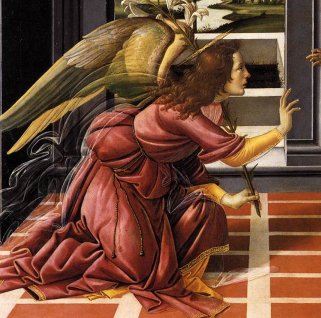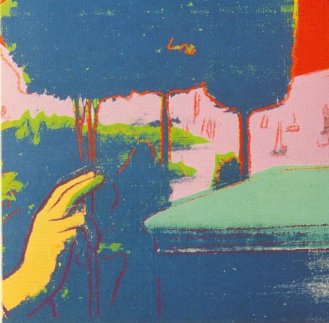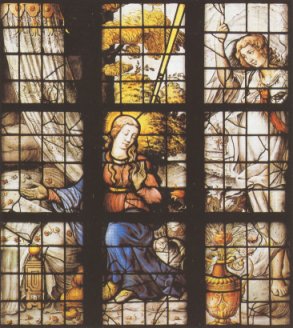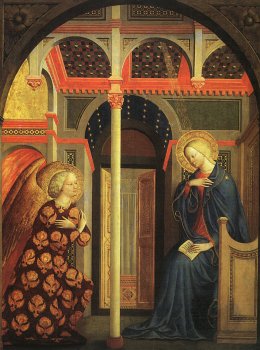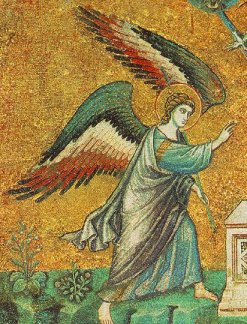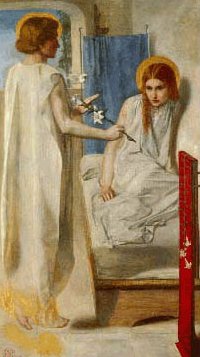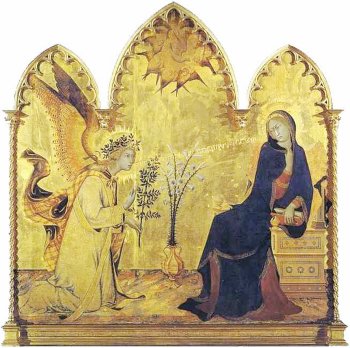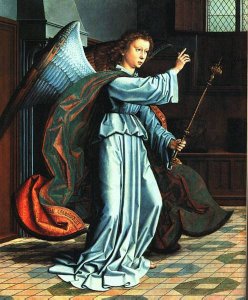|
The Angel Gabriel |
|
|
Gabriel is regarded as God's messenger in Christianity, Judaism and Islam, and is ranked an Archangel. This would suggest a senior management position in the great hierarchy of angels, but in fact Archangels are well down in the pecking order, above Angels but below the Virtues, Powers, Principalities, Dominions, Thrones, Seraphim and Cherubim. (Celestial Hierarchy, Pseudo-Dionysius the Areopagite, 5th/6th century). Previous appearances |
|
|
|
|
|
|
|
|
|
|
|
Wings |
|
|
|
|
|
Fra Filippo Lippi was fond of showing Gabriel with wings of peacock feathers, which according to some authorities, really should belong to the Cherubim; maybe Gabriel borrowed them. (Others argue that the Cherubim should have blue wings). This is probably a good point to leave the subject of wings, except to say that wingless angels have reappeared in more recent versions of the Annunciation, such as this one by Rossetti. No wonder Mary is looking alarmed - Gabriel's feet are on fire. |
|
|
|
|
|
What is he holding? In the two paintings above, Gabriel is shown carrying a lily - a symbol of the purity and virginity of Mary. The lily is a popular image, but less so in versions of the Annunciation from Siena. The lily was also a symbol of Florence, a place the Sienese were not fond of. (This is still true today when Siena play Fiorentina.) In the version by Simone Martini below, the lily has been replaced by a olive branch, and the lily has been relegated to the background. Note the prickles on the lily - this refers to the Song of Solomon: As the lily among thorns, so is my love among the daughters. In other images Gabriel is seen carrying a sceptre, or staff of office. Sometimes this is topped by a cross, symbol of the crucifixion to come. |
|
|
|
|
